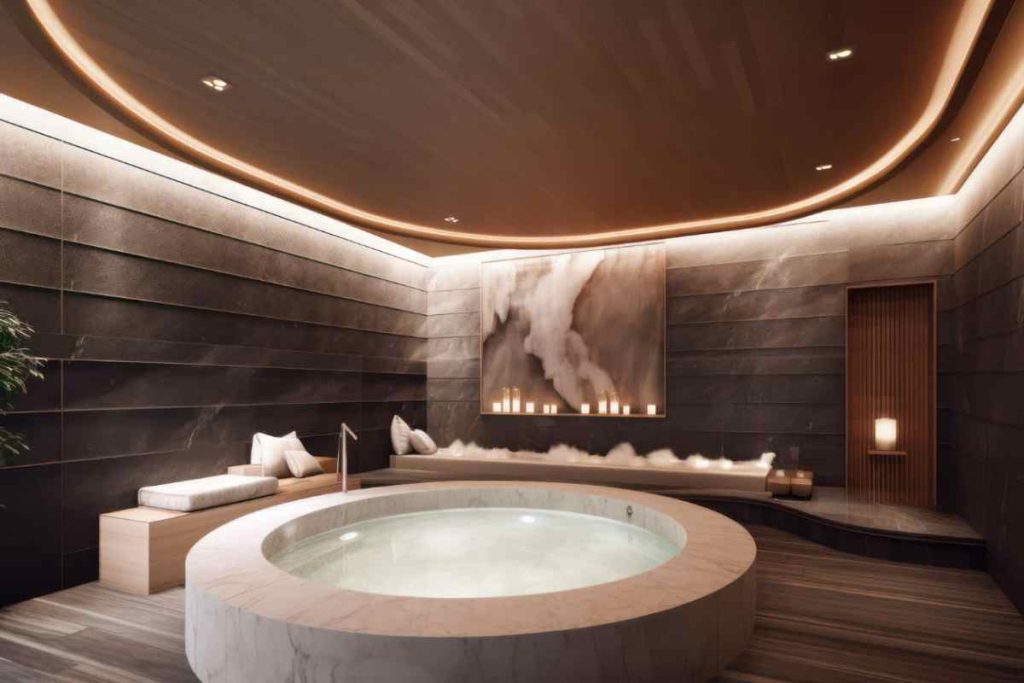The Enduring Legacy of Turkish Baths
The Turkish Bath, or Hammam, is a tradition that has stood the test of time for centuries. Originating from Roman and Byzantine practices and perfected during the Ottoman Empire, Turkish Baths have remained a cornerstone of wellness culture. Their continued presence in modern life is a testament to their ability to offer deep renewal and cultural continuity. They are not just rituals from the past—they are living traditions that continue to heal, cleanse, and unite.
Rituals That Transcend Generations
What makes the Turkish Bath truly timeless is its ritual structure, which has remained largely unchanged. Each step—warming the body, exfoliating the skin, applying foam massage, and rinsing—follows a sacred sequence. These steps not only relax the body but also quiet the mind. The power of ritual consistency provides familiarity and comfort, making the Hammam experience equally powerful for today’s generation as it was for those centuries ago.
Architectural Beauty That Inspires Awe
Another reason Turkish Baths remain relevant is their captivating design. From grand domes and marble interiors to intricately tiled walls and flowing water, every Hammam is a masterpiece of architectural art. These structures are designed not only for function but for spiritual serenity. Even in a fast-paced world, the visual and sensory harmony of the Hammam provides an escape into beauty and reflection, reinforcing its place in modern wellness experiences.
Holistic Healing in a Modern World
Despite evolving lifestyles, the health benefits of a Turkish Bath are as relevant as ever. Steam therapy opens the pores and supports detoxification, while scrubbing renews the skin and improves circulation. The emotional benefits, including stress reduction and mental clarity, are equally important. In a society overwhelmed by digital noise and constant demands, the Hammam serves as a space for mind-body healing like few others can.
Social Connection Through Shared Experience
Historically, Turkish Baths were community hubs—a place where people gathered, celebrated, and connected. That social element remains today. Whether attending with a friend, a partner, or joining others in silence, the Hammam fosters a shared sense of calm and well-being. The ability to connect with others while also finding personal peace makes it a uniquely balanced and socially nourishing experience.
Adaptation Without Losing Authenticity
Modern Turkish Baths have embraced contemporary needs without sacrificing tradition. Facilities like Felicity Hammam combine historical ambiance with luxurious upgrades—private sessions, aromatherapy, and personalized massage treatments. This blend allows the Hammam to remain relevant while honoring its roots. The balance of modern comfort and ancient ritual ensures that the tradition continues to thrive across cultures and generations.
A Timeless Gift of Self-Care
In today’s wellness landscape, self-care is more than a trend—it’s a necessity. The Turkish Bath provides one of the oldest and most profound methods of caring for the self. It nurtures physical, emotional, and spiritual health in a single experience. By stepping into the Hammam, you step into a rhythm of care that is both ancient and ageless, offering a timeless gift of healing and rest.
Conclusion
Turkish Baths have endured not by resisting change, but by staying rooted in values that never age: care, ritual, beauty, and community. Their relevance today proves that some traditions are simply too powerful to fade. Whether for relaxation, connection, or renewal, the Hammam continues to offer a sanctuary that speaks to the human spirit. It remains as timeless today as it was hundreds of years ago—an eternal space for healing, reflection, and peace.
Frequently Asked Questions
- Why are Turkish Baths still popular today?
- Because they offer deep physical and mental rejuvenation through a timeless ritual experience.
- What are the key features of a traditional Hammam?
- Steam rooms, marble slabs, domed ceilings, exfoliation, and foam massages.
- Can anyone visit a Turkish Bath?
- Yes, they are suitable for most people. Always check with a doctor if you have health concerns.
- What should I bring to a Turkish Bath?
- Most Hammams provide everything, but you may bring your own skincare products if desired.
- Is the experience the same everywhere?
- While the core rituals are similar, the ambiance and services vary by location.
- How long does a typical Turkish Bath session take?
- Generally between 60 and 90 minutes, depending on your selected package.
- What’s the difference between a Hammam and a spa?
- A Hammam follows a historical sequence of rituals, while a spa may offer varied modern treatments.
- Is the Hammam good for skin conditions?
- Yes, it can help with acne, dryness, and overall skin texture through exfoliation and steam.
- Can I talk during the Hammam session?
- Low voices are acceptable, but most guests prefer silence to enhance relaxation.
- How often should I use a Turkish Bath?
- Once a month is ideal for maintaining skin health and emotional well-being.
